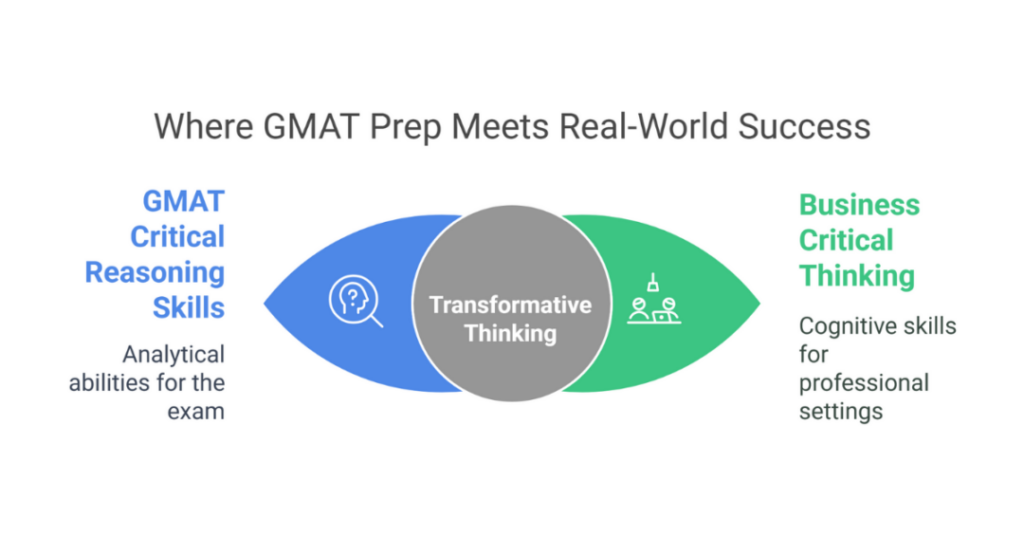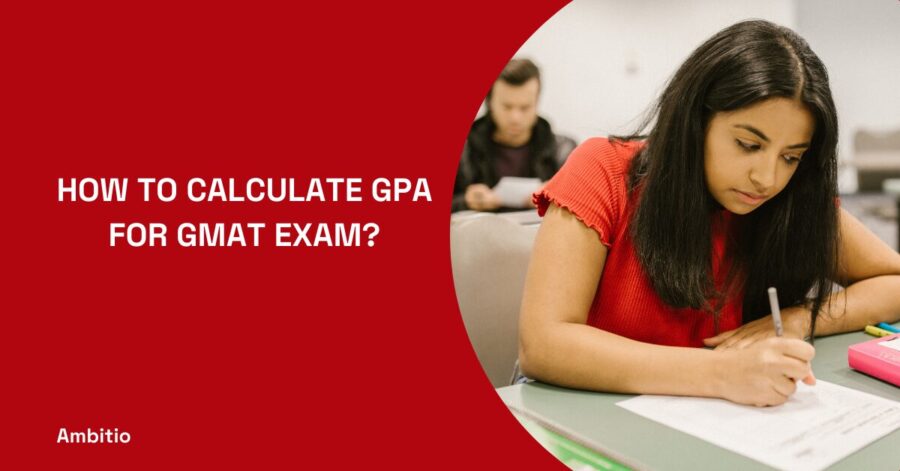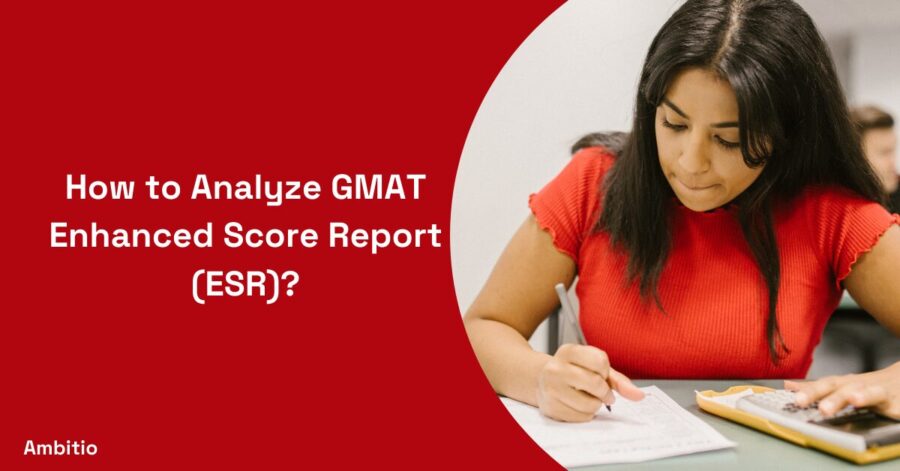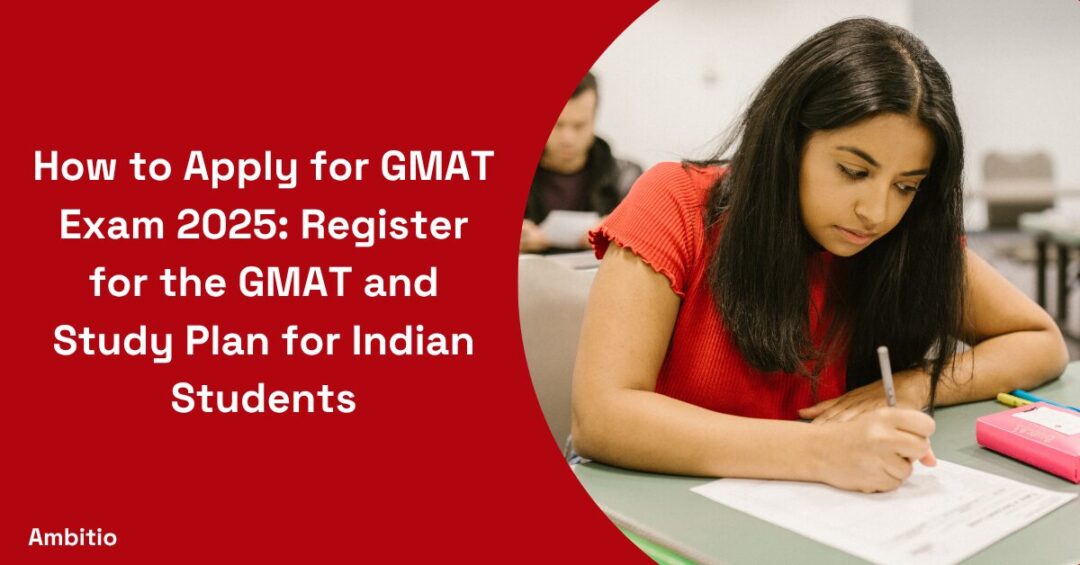20 August 2025
5 minutes read
AWA GMAT (Analytical Writing Assessment): Integrated Reasoning and GMAT AWA Essay Template to Help Indian Students in GMAT Prep

Key Takeaways
- AWA GMAT tests analytical writing skills, requiring students to evaluate arguments and present ideas with clarity and logical reasoning.
- AWA GMAT is scored separately, but it still matters since strong writing reflects well on overall communication and academic readiness.
- AWA GMAT preparation improves critical thinking, helping students analyze flaws in reasoning and craft persuasive, structured essays.
If you’re planning on applying to a graduate business program, it is likely that you understand the GMAT is a critical part of your application. While it does not always get the recognition it warrants, the AWA does a lot for demonstrating your critical thinking and communication skills. In this blog, we will give you useful tips, tactics, and templates, for your GMAT AWA and GRE AWA response.
Understanding the GMAT AWA Section by GMAC
The GMAT Analytical Writing Assessment is the first section of the GMAT exam. The AWA is designed to test your ability to critically evaluate an argument, and write your analysis.
The AWA only has one task: analysis of an argument. You will provide a brief argument (usually a paragraph or so) for you to make a critical analysis of their logic and/or evidence. You should critique the argument in a structured and logical way.
Scoring in AWA GMAT (Analytical Writing Assessment)
GMAT AWA (Analytical Writing Assessment) is provided a score on a scale of 0 to 6, in half-points, by 2 evaluators: a computer and a human rater. The final score you receive is the average of the two scores.
Many graduate business programs will take your AWA score into consideration during an admission review. While it is the least assessed section of the GMAT, if you do get a high AWA score, it will improve your chances of being accepted into your target program.
Pro Tip: It is always recommended to carry your test scores including IELTS, TOEFL, GRE, GMAT, SAT and ACT.
How to Prepare for GMAT Integrated Reasoning and Analytical Writing Section?
The AWA essays are simple and follow a specific pattern. Essay structure includes: an introductory paragraph; body paragraphs where you critique the argument; and a conclusion. It is crucial you follow this structure to keep the essay organized and easy to read.
One helpful study aid you can use are AWA templates. These templates will allow you to build your own essay while assuring you have the required elements in your response. To practice your analytic skills, practice making critiques of sample AWA arguments.

There are numerous sample AWA arguments posted on the Internet, so utilize them as a way to be able to analyze and critique the arguments.
When you practice, do it with others. Share your peer/ instructor practice essays to allow them to provide you feedback on your writing and analytical abilities.
GMAT AWA Practice and Writing Tips
Your AWA essay should follow the conventions of standard written English. In other words, pay attention to grammar, punctuation, and clarity of expression to ensure the meaning you convey is clear to your reader. An essay that contains language errors can skew your overall score. In the end, you’ll want to focus on the flaws in the argument, the use of evidence, and logical construction.
Sample AWA Template for AWA Task
To be successful in GMAT AWA, you will need to hone your ability to analyse an argument. Here, you were focused on the work you put into your abilities and study plan for the specified argument which would have ultimately suggested how you would perform.
Now, let’s have a closer look at an example template:
Introduction
- Briefly summarize the argument’s main points.
- State that the argument is flawed and explain your purpose.
Body Paragraphs (2-3 paragraphs)
- Each paragraph should focus on one major flaw in the argument.
- Provide evidence from the argument to support your critique.
- Explain how the flaw weakens the argument’s overall conclusion.
Conclusion
- Summarize your main points.
- Reiterate that the argument is flawed and should not be accepted as presented.
How to Analyze the Argument in Your AWA Essay?
As part of your critique, identify assumptions of the author that he or she did not state directly in the argument. Determine whether these assumptions are reasonable and how they affect the potency of the argument.
Think of any other explanations or examples that may counter the conclusion of the argument. If you can prove that there are other viable explanations then you will strengthen your critique.

Look at the evidence presented in the argument. You should assess whether the evidence is relevant, reliable, and sufficient to support the claims in the argument. Identify any weaknesses in the evidence. Assess the logical structure of the argument. Look for gaps in logic, circular logic, or any flaws that weaken the validity of the argument.
AWA Scores in Writing Task—Analysis of an Argument: What Do They Mean?
Knowing what your AWA scores mean can help you understand how well you did. Your AWA score is provided separately from your overall GMAT score. The AWA score is on a scale from 0 to 6 in 1/2 point increments.
In addition to your overall separate score, you will also receive standardized written English feedback. This feedback will help you evaluate your writing skills.
Tips for Achieving a High AWA Score
Though it is an important discipline not to make a personal judgment, examples can help illustrate points you are making in essay. Be sure to be brief regarding examples and making sure you help support your critique.
The conclusion should do an effective job of summarizing your main points while again making it clear that the argument doesn’t hold water. A solid conclusion, one that leaves a lasting impression on the grader, is important.
Please take a few minutes toward the end of your 30 minute AWA time limit to edit and proofread your essay. Attention to possible minor mistakes can help improve the overall writing.
Conclusion
To summarize, GMAT AWA is a learnable skill with practice and thoughtful preparation. Familiarity with essay structure, using AWA templates, writing sample arguments, and feedback can all help your analytical writing performance and in this dataset can make you successful in this section of the GMAT.
It is important to remember that a good AWA score will not only provide evidence of your ability to analyze arguments; it will also enhance your overall application to graduate business programs. The time spent studying for GMAT AWA will get you that much closer to completing your higher education objectives.
If you have any questions or need further guidance on official GMAT AWA, feel free to reach out to us at Ambitio!
FAQs
What is the AWA GMAT and why is it important?
The AWA GMAT, or Analytical Writing Assessment, evaluates a test-taker’s ability to analyze arguments and write effectively. AWA GMAT scores highlight communication and reasoning skills.
How is the AWA GMAT scored?
The AWA GMAT is scored on a scale of 0 to 6, in half-point increments. Each essay in the AWA GMAT is graded by both a human rater and an AI system.
How much time is given for the AWA GMAT section?
The AWA GMAT section provides 30 minutes for writing one essay. Effective time management is crucial to maximize performance on the AWA GMAT.
What types of essays appear in the AWA GMAT?
The AWA GMAT requires writing an “Analysis of an Argument” essay. In the AWA GMAT, students critique the reasoning of a given passage instead of sharing personal opinions.
Does the AWA GMAT affect admissions decisions?
Yes, the AWA GMAT can influence admissions because strong writing showcases critical thinking. While not as critical as Quant or Verbal, AWA GMAT scores still matter.
How can students prepare effectively for the AWA GMAT?
Students can prepare for the AWA GMAT by practicing essay prompts, improving logical reasoning, and reviewing sample essays. Consistent preparation boosts AWA GMAT confidence.
Is the AWA GMAT equally important for all business schools?
The importance of the AWA GMAT varies by school. Some emphasize AWA GMAT scores strongly, while others focus more on Quant, Verbal, or overall GMAT performance.

You can study at top universities worldwide!
Get expert tips and tricks to get into top universities with a free expert session.
Book Your Free 30-Minute Session Now! Book a call now




























